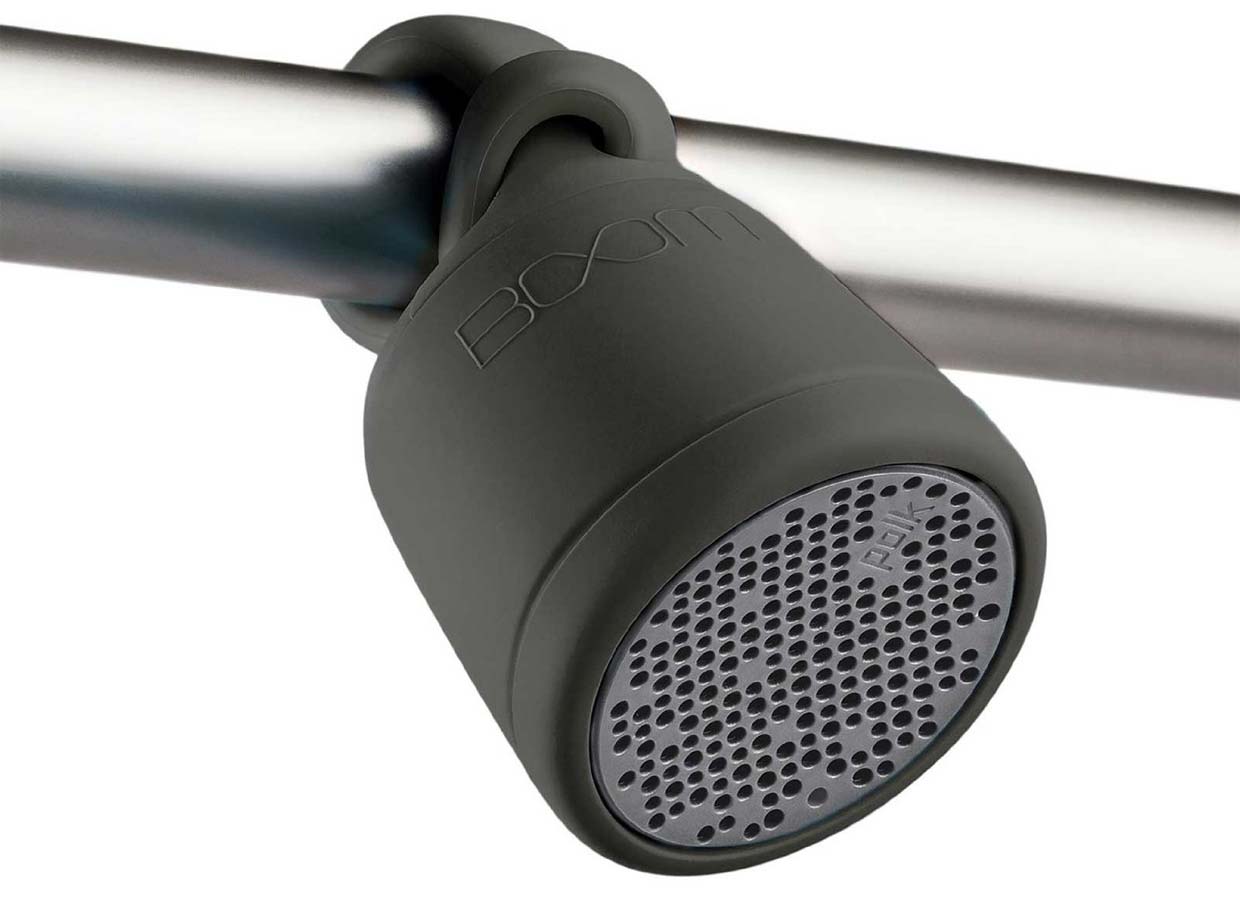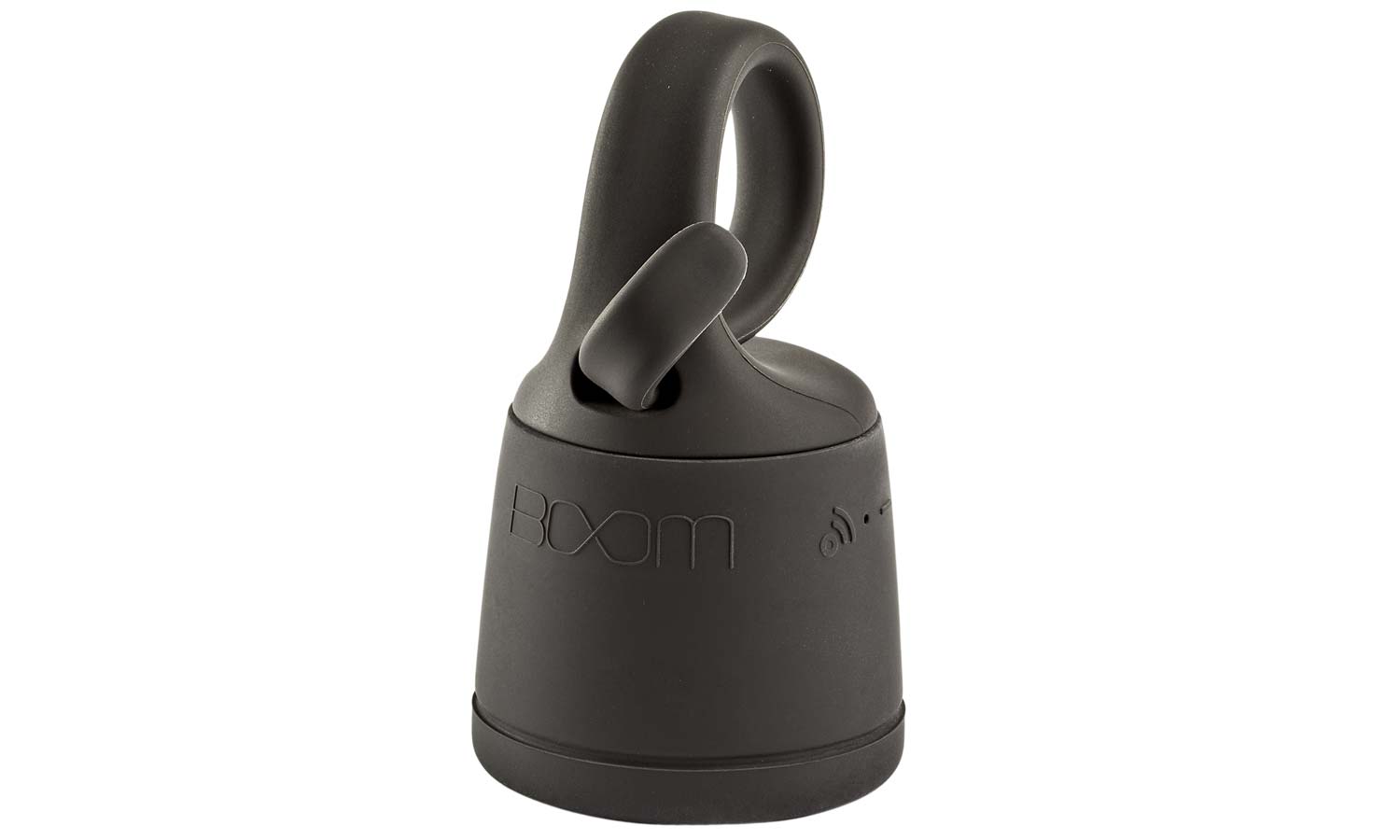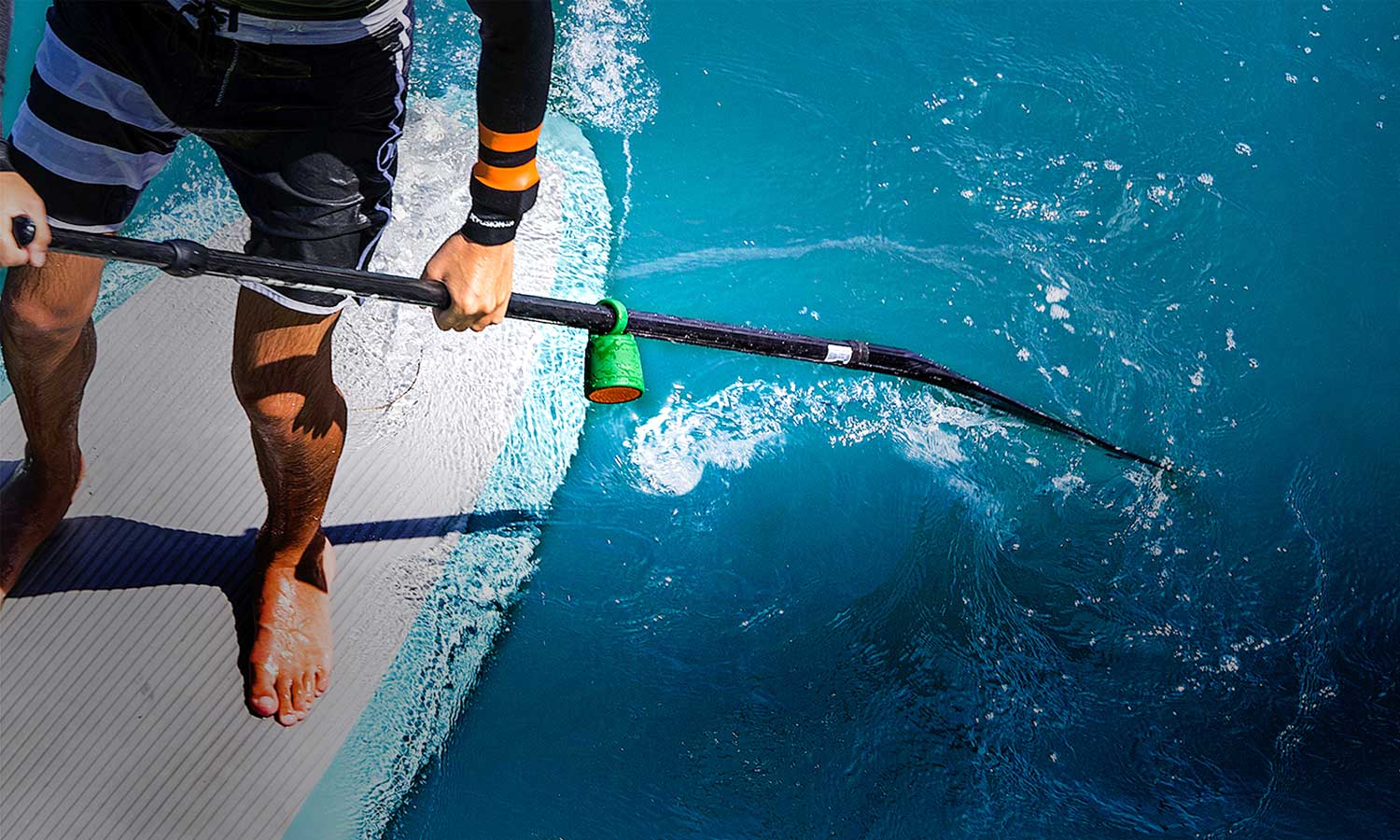Tom's Guide Verdict
The waterproof Swimmer Duo improves on its predecessor, and joining two Duos together improves the sound greatly. But there are better-sounding, lower-cost alternatives.
Pros
- +
Waterproof and shockproof
- +
Pair two for stereo sound
Cons
- -
Weak bass
- -
Difficult to access port for charging
- -
Poor speakerphone
Why you can trust Tom's Guide
Speakers don't have to be boring, black rectangles relegated to the living room. The Polk Boom Swimmer exhibited that in 2013, sporting a flexible tail and suction cup accessories that made the ultraportable Bluetooth speaker fun to use everywhere. Polk's $60 Swimmer Duo builds on all that fun, now with the ability to be paired with a second Duo for rich, stereo sound. Two is much better than one in the Duo's case, but you can get better-sounding speakers for less money.
Design
Available in black, orange, green and blue, the Swimmer Duo closely resembles the original Swimmer. At its core is a cylindrical speaker wrapped in rubber that protects the speaker from the elements. The Duo is slightly larger than its predecessor; it measures 9.71 x 2.62 inches with the tail fully stretched, compared to the original, 8.65 x 2.5-inch Swimmer.

The Swimmer's strengths are its toughness and flexibility. And in this case, I mean flexibility literally. The device comes with two attachments that screw into the bottom of the speaker. The flexible tail can be hung or wrapped around a pole; twist it up, and it becomes a stand.
You can also use the suction cup attachment to adhere to glass and shower walls. The suction cup takes advantage of the close connection to resonate sound through the surface it's attached to, improving the bass output. This was especially noticeable in the shower, where the Swimmer turned the stall into a vibration chamber.
You have to buy each Duo separately, as they don't come in a two-pack.
The Duo's best new feature actually requires two Duos; you can pair them together to create a left-right stereo combination. This greatly improved the sound quality. But despite the name, you have to buy each Duo separately; they don't come two in a pack.
Befitting a speaker that's at home in the water — and hopefully far away from your mobile device — you can control playback, skip songs and adjust the volume with the plus (+) and minus (-) buttons on the side. Other than that, the Duo keeps it simple, with few buttons on the device.
Ruggedness Testing
With an IPX7 rating, the Duo can withstand being dunked in 3 meters of water for up to 30 minutes. It handled being placed in the shower for 15 minutes without issue, as well as being dunked in a sink-full of water for 5 minutes. The unit is also dust- and shock-proof. I rolled it off a table onto a wood floor, and it suffered no noticeable scuffs or problems. It also fell from my shower wall when the suction failed, again with no harm done.
Performance
The sound quality of the Duo depends on how you use it. A single Duo produces sharp, often tinny treble and delivers very little bass, though that improves if you use the suction cup attachment. JBL's $50 Clip+ delivers much better bass from a similarly small single speaker.

With two Duos connected together, all aspects of the sound improve, including better bass and fuller treble, though the sound still doesn't match the fidelity of JBL's $100 Flip 3. However, two Duos with suction cups attached to a very resonant surface produce better sound still, and rival the Flip 3 in terms of overall sound.
The hand claps on Coldplay's "Adventure of a Lifetime" sounded thin on a single Duo, but were much fuller and more prominent when played through two Duos. When I attached the two speakers to the shower walls with the suction cups, the bass really boomed.
MORE: Best Bluetooth Speakers
Led Zeppelin's "Custard Pie" came across muddled on a single Duo, but the stereo separation on two Duos made the guitar, bass and drums much more distinct. The sharp treble helped Lindsey Buckingham's guitar fingerpicking on "Never Going Back Again" sound crisp, but a single Duo lacked any depth. In contrast, two suctioned to a shower delivered a rich sound.
This tiny speaker can get surprisingly loud. I measured it at 90 decibels, though at that level it distorted badly. The distortion fell off at around 85 dB.
Speakerphone
Polk added a speakerphone to this version of the Swimmer, but that feature could have been left out. Using the speaker makes the people you are talking to sound significantly louder than with the iPhone's built-in speaker. However, the people I spoke to said I sounded much softer and less clear when using the Swimmer's microphone versus the iPhone's speakerphone.
Battery Life
The Swimmer Duo is rated for 8 hours of play on a full charge, and after 5 hours of listening, the battery indicator on my iPhone showed that more than half of the battery was left. The power light turns red when the battery gets low, but there's no way to view the battery life on the device itself before it reaches that point.
The battery charges through a micro USB port under a snug flap on the bottom of the speaker. The snug fit keeps the port dry while submersed in water, but it was also very difficult to open when I needed access. I resorted to using a pen point to pop it out.
Setup
The Duo paired easily with iOS and Android devices; just push the Link button for a few seconds to put the speaker in pairing mode. The Swimmer Duo doesn't state its wireless range, but I was able to keep a strong connection from more than 75 feet away from my mobile device.
I was able to make the duo pairing process work about 75 percent of the time.
Linking two speakers together requires a few more steps: First, pair one speaker to your mobile device. Then, press the Link button on both speakers until they chirp. Wait a few seconds for another audio signal. If all went well, they now act as left-right stereo speakers, with the first unit that's connected to the mobile device acting as the left speaker. I was able to make this work about 75 percent of the time. I also found that the connection between the two speakers was better when I used my Android tablet rather than an iPhone 6S.
MORE: Our Favorite Outdoor (Waterproof) Speakers
Once two Duos are linked, turning off one speaker shuts off both of them. And as long as you power on the two speakers within 8 seconds of each other, the Duos will remain linked.
The Duo doesn't offer any audio adjustments, such as bass or treble, and there's no mobile app like the ones that Ultimate Ears and JBL offer for extra features.
Bottom Line
The Swimmer Duo's small size and flexible tail make it easy to take with you, and its ruggedness means you don't have to fear the elements. If portability and waterproofing are the most important features for you, the Duo is a good choice.
But a single Duo doesn't offer much in the way of audio quality. JBL's $50 Clip+ sounds better and offers some water resistance. The sound improves if you connect two Duos, though setup can be difficult. Plus, at $120 for two units, your selection of good alternatives increases greatly. UE's $100 Roll and JBL's $100 Flip 3 both sound better for less money.

Michael Gowan is a freelance technology journalist covering soundbars, TVs, and wireless speakers of all kinds of shapes and sizes for Tom’s Guide. He has written hundreds of product reviews, focusing on sound quality and value to help shoppers make informed buying decisions. Micheal has written about music and consumer technology for more than 25 years. His work has appeared in publications including CNN, Wired, Men’s Journal, PC World and Macworld. When Michael’s not reviewing speakers, he’s probably listening to one anyway.

